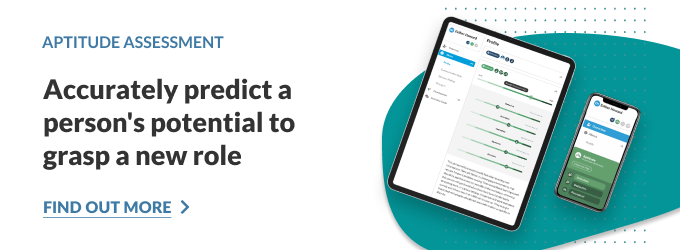Would you call yourself a good “problem solver?” Deductive reasoning is an aptitude test which measures your ability to problem solve. Like inductive reasoning, deductive reasoning is a logic-based test which is trying to understand how you problem solve. The biggest difference is that deductive reasoning aims at testing a current theory whilst inductive reasoning aims at developing a new one.
Deductive reasoning tests are used alongside other tests and whilst they’re traditionally associated with the engineering world, they are becoming more commonly used by employers to help find candidates that can apply thinking patterns across their work.
Today we are going to take a look at what deductive reasoning tests are, what they look like, best tips to practice them and even give you some example questions.

What is a deductive reasoning test?
Being able to answer questions using logic and doing it quickly whilst concluding the answer from the information provided is a deductive reasoning test. Intended to be abstract in nature, you do not need to know any culturally specific information; everything you require to answer the question is within the question. There is only one correct answer.
There's a lot of confusion around deductive reasoning and inductive reasoning examinations. They sound the same as they are testing logical reasoning, but they do differ.
Inductive reasoning starts with an observation, it's then down to the candidate to use that information to detect a pattern and form a theory on the answer. For example, (Observation) A low-cost airline flight is delayed, (Observe a pattern) Another 20 flights from low-cost airlines are delayed (Develop a theory) Low cost airlines always have delays.
Deductive reasoning is looking for you to take information and follow logic to find the right answer. For example, (Existing theory) Low cost airlines always have delays (Create a theory) If passengers fly with a low cost airline, then they will always experience delays (Collect data to test theory) Collect flight data of low-cost airlines (analyse results) 5 out of 100 flights of low-cost airlines are not delayed = reject theory.
Why are deductive reasoning tests used by employers?
Deductive reasoning helps employers to understand how you think and the way you logically process information to make a logical deduction. Whilst it is traditionally used in higher skilled jobs, it has become an important tool to use when assessing candidates for many different types of roles as well.
Because these types of examinations don’t require prior or culturally sensitive knowledge, recruiters and employers can ask to have them completed before or during the interview phase. If the role you’re applying for requires logical thinking, problem solving or deductive reasoning in a short space of time, then it is a great tool for employers to use in their selection process.
Deductive reasoning is also widely popular because these tests are less dependent on your level of education in verbal and numerical tests - it’s about how you think and use the logic which is more situationally focused.
Tips for practicing for deductive reasoning tests
The best advice for being able to prepare for a deductive reasoning exam is understanding that there are three main components to one. Firstly, being able to quickly read and understand the information given; secondly, to analyse and interpret that information, thirdly, using that information to make a logical deduction.
Of course, practicing all of these skills is essential, but what are the best ways to do so? Here are some top tips.
Practice reading sentences - fast
Knowing that being able to read quickly is essential, then you need to know how to do that. One of the best ways to do this is to take large blocks of text and shorten them into sentences of a few words to longer sentences for variation.
Practice reading them over and over until you can get used to the information that is being given. It's a technique used in learning languages which has been shown to help overall vocabulary development in tests over the years.
Simplify things
You need to be able to take the information you're reading and find a way to simplify what it means for a deductive reasoning examination. Whatever problem is being asked by the question, (mathematical, written, data sets) you're not expected to question the veracity of it - the answer is in the question. Break down the information into easy-to-understand points and then use logic to make the correct deduction.
Finally, practice, practice, practice!
Use practice exam papers and internet resources to get you acquainted with the types of questions deductive reasoning tests include. Think about how much practice you may need before a test or interview and double it if you can. You want to feel confident that you can apply some of the skills mentioned earlier to your best ability and make the best out of your test preparation.

Inductive reasoning example questions
Read the passages of information thoroughly and select the correct answer from the various options.
Example question 1
The Large Silver Watch states the time as 15.50.
The Small Silver Watch displays the same time as the Gold Watch.
The Bronze Watch is small in size.
The Gold Watch is ten minutes slower than the Large Silver Watch.
The Bronze Watch is five minutes faster then the Small Silver Watch.
The Small Silver Watch displays the time as 16.00
A. True
B. False
C. Insufficient Information
Answer: False
Explanation:
A Line 2 states that the Small Silver Watch is the same time as the Gold Watch.
B. Line 4 states that the Gold Watch is ten minutes slower than the Large Silver Watch
C. Line 1 states that the Large Silver Watch says the time is 15.50. Therefore, the small Silver Watch should display 15.40 not 16.00. Therefore, this statement is false.
Example question 2
The factory manufactured a thousand soft toys in the last month and eleven hundred in the month before that. Therefore, raising employees' salaries helped improve the factory's productivity.
Which assumption underlies the above argument?
A. Toy factories manufacture about a thousand toys each month.
B. Two months ago, the factory made twelve hundred toys.
C. Raising employees' salary always increases productivity.
D. The factory used to manufacture less than a thousand soft toys a month.
E. The factory produced a thousand computers last month.
Answer: D
Explanation:
The statement regarding the improvement in the factory's productivity suggests that the factory was less productive in the past than it is now; Nowadays, the factory produces 1,000-1,100 toys a month. If this is an improvement, you have to assume that productivity used to be lower than 1,000 toys a month in the past, as suggested in answer choice D.
A. You cannot deduce a general rule about all toy factories from just this one example.
B. The fact that there was a difference of one hundred toys between the previous and the one preceding it does not imply anything regarding the months before. This suggestion also contradicts the information given in the question. You have to assume productivity used to be lower, not higher, which makes this answer choice illogical.
C. Eliminated using the same reasoning – you cannot deduce a general rule about raising employees' salary from just this example.
E. As far as we know, this company produces soft toys only. It is possible that it manufactures other products as well, but we have no way of knowing that for sure. Therefore, we cannot say whether this statement is true or false.
Example question 3
Mike finished ahead of Paul. Paul and Brian both finished before Liam. Owen did not finish last.
Who was the last to finish?
A. Owen
B. Brian
C. Paul
D. Liam
Answer: Liam
Explanation:
Mike finished before Paul, so Mike was not last. Paul and Brian finished before Liam, so Paul and Brian were not last. It is stated that Owen did not finish last. Only Liam remains, so Liam must have been last to finish.
Assess aptitude with Thomas
Understanding how quickly someone learns new information can inform your recruitment decisions and help build personal development programmes.
The Thomas Aptitude assessment (GIA) consists of 5 online tests, including reasoning, perceptual speed, number speed and accuracy, word meaning and spatial visualisation.
Speak to one of our team to learn how the Thomas Aptitude assessment can help you better understand the learning speed and trainability of your people.





